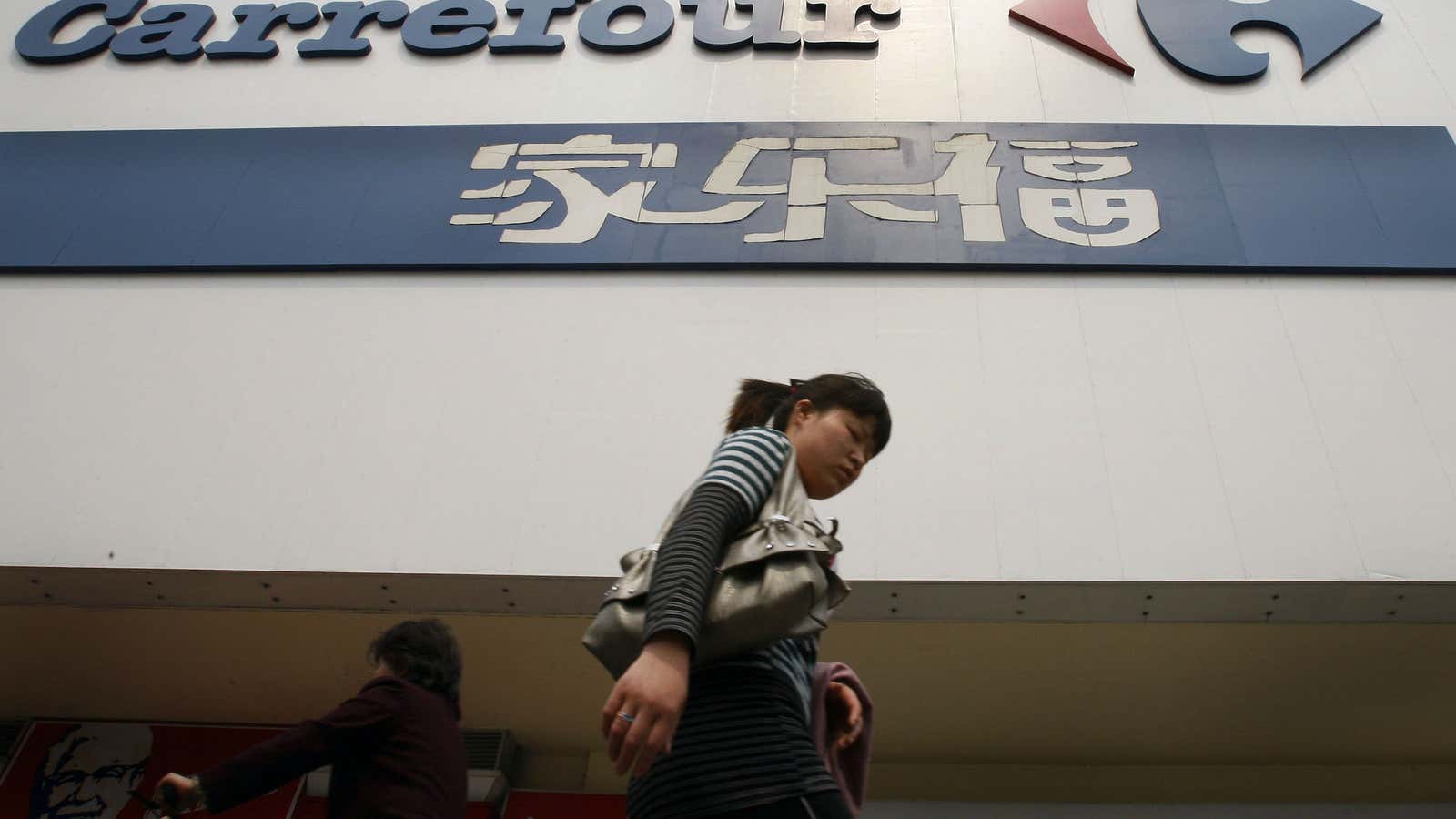Hypermarkets–those enormous stores in the style of Carrefour and Wal-Mart that combine groceries with other goods–have spread quickly in Chinese cities. But they’re not keeping up with Chinese shopping habits.
One telling sign: French hypermarket Carrefour is considering selling its operations in China and Taiwan through an initial public offering or by combining those assets with another company, the Wall Street Journal reports today (paywall). Last year, the retailer held 6.9% of hypermarket share compared to 9.1% three years ago, according to the research group Euromonitor. (Carrefour has 48.1% of the market share in Taiwan, where the retailer has been since 1989 and benefited from slipups (pdf) by competitors.)
Rising rent, food and labor costs in China are weighing on foreign hypermarkets like Carrefour. Government support for local competitors hasn’t helped. Foreign hypermarkets have also suffered from the growth of e-commerce, says Wu Weiyi, vice president of consulting firm Alix Partners, told the newspaper (paywall). Wu said last year’s sales volume growth was the industry’s slowest in a decade.
Perhaps most importantly, foreign companies like Carrefour and Tesco may have assumed that China’s rising middle class shoppers would behave like their Western counterparts. But unlike Western shoppers that shop less frequently and buy in bulk, Chinese shoppers still shop almost daily for fresh food and treat the hypermarket like a local convenience store, according to a report last year by the consultancy firm McKinsey. Most urban Chinese live in small apartments and don’t have cars, so they purchase less per visit.
In response, locally-attuned competitors like RT Mart, owned by French-Taiwanese joint venture Sun Art Retail Group, have gained market share by including wet markets in their stores with fresh fish and poultry. Chinese shoppers also tend to opt for either bigger bargains (found in bodegas, street markets or online) or high-end brands, but not much in between.
No wonder then that Chinese hypermarkets make on average $2,161 sales per square meter, or 10 square feet (pdf, p. 2)–roughly 40% of what is made in the US, according to estimates by Planet Retail.
